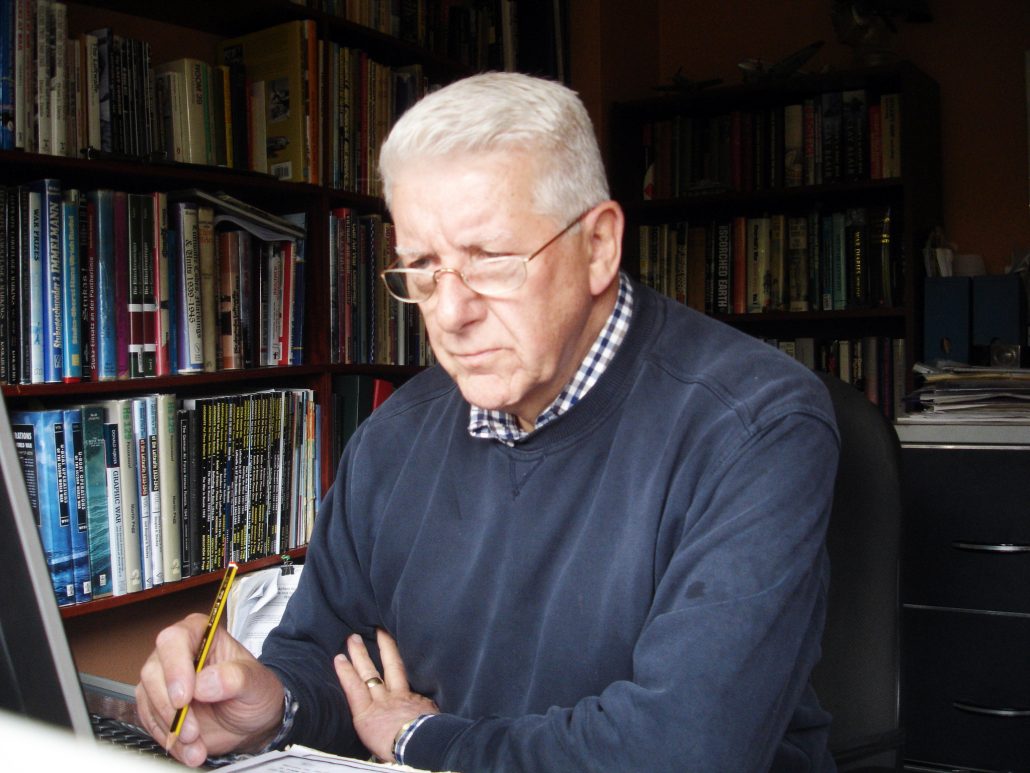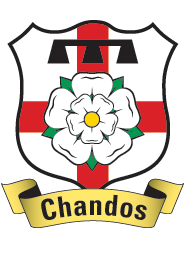Interview with Martin Pegg
 On behalf of Chandos Publications, in the spring of 2018, project editor, Robert Forsyth, took the opportunity to chat with Martin Pegg about his forthcoming book.
On behalf of Chandos Publications, in the spring of 2018, project editor, Robert Forsyth, took the opportunity to chat with Martin Pegg about his forthcoming book.
RF: Martin, Thanks very much for your time. We’re delighted to be working with you on this new Hs 129 project. Can I ask how and when did your interest in the Luftwaffe begin?
MP: It goes back a long way. I think my father taking me to the cinema in the 1950s to watch war films probably must have had something to do with it. Grainy images of German aircraft and the uncanny wail of the Stuka must have ignited some hidden spark which later took hold. I read recently, incidentally, that when Oberstleutnant Dr. Ernst Kupfer became the first General der Schachtflieger in late 1943 he seriously suggested the Jericho siren be reintroduced.
RF: What was it about the Hs 129 that appealed to you?
MP: It didn’t appeal at all for quite some time. In the 1950s and early 1960s, the only photos were of the Argus-engined Hs 129 A or of FE-4600 in US markings, neither of which were particularly appealing. Even the Dora Kurfurst series of books didn’t have any good photos of it and it was only when Profile 69 was published in 1966 that good, clear photos appeared for the first time. When I saw them I immediately liked the look of the aircraft, its colours and markings, and the fact that it was used in the anti-tank role and had nothing to do with fighters and fighter pilots! I also liked the look and sound of the unit designations and what, in those days, was the riddle of the redesignations which took place throughout the Schlachtflieger when the General der Schlachtflieger was appointed and the whole arm was reorganised.
RF: How did you begin to research the history of the aircraft?
MP: I went to the Bundesarchiv-Militärarchiv in Freiburg first, then followed up with enquiries to the US National Archives and (what was then) the UK Public Record Office (now the National Archives) at Kew.
RF: By and large, did the men who flew and service it regard it as a reliable and tactically effective aircraft?
MP: Yes, they did, and this was quite a surprise as most of what had been published was not altogether complimentary. They all regarded it as an ideal aircraft for anti-tank operations.
RF: Were there any weak points?
MP: Yes, the early failure of German engineers at Rechlin to realise that an effective air filter would be required for operations in North Africa was a disaster. General Seidemann wrote that the aircraft had faulty carburettors, but it was the air filters that were the problem. The armour, too, could have been better distributed. The protection provided for the pilot was excessive, while the engines and fuel system were insufficiently protected. Consequently, the aircraft was easily set on fire when hit in these areas.
RF: When it comes to the Luftwaffe, the story is often ‘too little, too late’. Do you think that rings true in the case of the Hs 129?
MP: Well, that’s difficult so say. The Luftwaffe made the mistake of trying to destroy tanks on the battlefield rather than destroying the factories where they were made. So, doing it the hard way, the Luftwaffe certainly needed more anti-tank aircraft. Interestingly, though, although there was a call to slightly increase Hs 129 production in 1944, monthly production stayed at 40 aircraft which was sufficient to replace losses.
RF: I’ve often wondered, and been intrigued by the notion, whether if the Hs 129 been available in numbers with good cannon armament and/or external ordnance on the Western Front in the summer of 1944, it may have had an impact (at least) on, say German operations in Normandy… or for that matter, a little earlier in Italy.
MP: Not a hope. Allied air superiority was such that the Schlachtflieger were unable to operate in the West. The attempt even to employ III./SG 4 in Normandy was a disaster and that was with the faster and more agile Fw 190.
RF: Did Henschel or the RLM have firm plans to continue its development beyond the B series?
MP: At first, the RLM was interested in another model. The aircraft’s design team were in constant touch with operational units and proposed to incorporate various improvements in the Hs 129 C and the RLM proposed ordering several hundreds of them. I have described the development and production plans in some detail in the new edition.
RF: Thanks, Martin. Are you working on any other projects at the moment?
MP: Yes. Some years ago I wanted to do something completely new, something less difficult than the Hs 129. Something that would be less demanding to research and was not well known or had already been written about. I found exactly what I was looking for in the story of the Royal Navy’s planning and execution of the surrender of the U-boats in 1945 and their subsequent fates. It is a fascinating story that deserves to be told and I’m looking forward to completing it.

